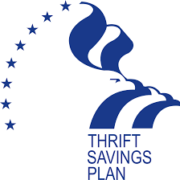Many of the funds in the government’s 401(k)-style retirement savings program are seeing losses from market downturns, but the G Fund is growing.
Well it’s official. The G Fund is now the biggest amongst the five core TSP funds. That’s not a small feat as the C Fund – the next biggest fund – has more than $200 billion invested in it.
But, while we’re still waiting for the exact numbers from the most recent TSP Investment board meeting, based on market performance, the G Fund holds between $215-$220 billion.
So, what does this mean for you?
Why This Happened
There are two main reasons why the G Fund is now on top.
First, the other funds are struggling. The C, S, I and F funds have all lost money in 2022 while the G Fund has the inherent advantage of being guaranteed by the government. In other words, the G Fund can’t lose money while all the other funds have suffered losses. Therefore, just from market performance, the other funds’ sizes have wavered compared to the steady G Fund.
Second, people are jumping ship. The market volatility has got many people spooked and many are jumping out of the more aggressive stock funds – C, S, and I – in favor of the G Fund’s safety. So, the other funds are not only losing value from recent market performance but also from individual federal employees moving their money out of it.
But what most of those federal employees don’t realize is that right now may be one of the worst times to go to the G Fund.
Big Opportunities Right Now
When the market struggles, there is always good news and bad news. The bad news is that it is painful to watch account balances fall.
The good news is that this is an incredible opportunity to set yourself up for the future. Because when the market is down, you are able to invest at a huge discount. Think about it. The C Fund has lost about 20% since January 2022 which means that you can buy significantly more shares in the C Fund with the same TSP contribution as before.
While you are working, down markets are an incredibly powerful time to buy low so you can sell high later. If you go all into the G Fund right now, that is doing the exact opposite: buying high and selling low. Over time, this strategy could be detrimental to how much money you’ll have by retirement.
Nearing Retirement or Already Retired?
But what if you are close to retirement and you don’t have much more time to “buy low” by putting new money into your TSP?
For those approaching retirement or already retired, it is even more important to buy low and sell high, and you should develop an investment strategy to help you to do that for the rest of your life.
Citation: 6/11/2022 Government Executive By Dallen Haws



